Alas, not all culinary tales can be a happy one, as is the case in the trajectory of Belarusian cuisine.
For a cuisine seemingly so magnificent until as recently as last century, it can only leave you wondering what could have (and should have) been.
Thankfully for dishes like draniki, we have windows into the cuisine’s traditional splendor.

Old Belarusian Cuisine, the Soviet Influence and Draniki
Much like with other former Soviet states, many of the associations we make to the local cuisines are actually fairly recent developments.
What we might call contemporary Belarusian cuisine, for example, has for the most part been a byproduct of the last two centuries. Even potatoes, now the feature ingredient for many Belarusian recipes like draniki, was introduced only in the 19th century!
As a result, it’s easy to overlook the traditional roots from which the cuisine hailed, but doing so would prove to be a grave mistake.
Historical Belarusian Cuisine
It might be hard to imagine, but Belarusian cuisine, along with others from the Baltic and Slavic lands, were once some of the most sophisticated cuisines of its time.
In large part due to its geographical position, the development of a highly refined – you might even say exotic – local Belarusian cuisine began as early as the 6th century AD as Eastern Slavic tribes commingled and began assimilating with one another. Located on the bed of rivers and lakes that effectively connected the Scandinavians with the Byzantine Empire, these budding Belarusian communities found themselves as the conjoining middle point of vibrant and lucrative trade activity. In addition to the benefits of prolonged exposure to both of these cultural powers, the Belarusians themselves also profited from these trade routes and positioned themselves as producers and traders, particularly of valuable agricultural crops.
By the 9th century, the state of Kievan Rus’ (whom we first encountered thanks to Ukranian nalysnyky) had begun developing into the predominant regional power and soon annexed many of the Eastern Slavic lands as part of their budding empire. While the Belarusians were able to maintain an independent cultural identity and some degree of self-sovereignty, they also became important contributors to the overall Ruthenian state up until its fall in the 12th century.
Following Kievan Rus’, the Belarusian lands were annexed and integrated into the next longstanding regional power: the Grand Duchy of Lithuania. Until its 17th century downfall, the GDL (whom we also covered via Lithuania’s saltibarsciai) would become one of the most influential and powerful cultural forces throughout the European continent, and the Belarusians were front and center to the entire experience.
For the Belarusian cuisine, this millennium from the early Slavic tribes until the end of the GDL spurred a highly unique and definitively refined combination of various cultural norms. Starting with a Slavic base, the cuisine mixed and mashed elements of Scandinavian, Byzantine, Ruthenian, Lithuanian and Polish culinary techniques together… and this does not yet consider any other “secondary” culinary influences as well. As we saw in Polish cuisine, for example, more Western cuisines like Italian and German played important roles in the development of those cuisines and thereby indirectly on what was brought into Belarus as well.
As a result, the Belarusian cuisine of old, especially from the 15th century onwards, boasts well-documented examples of an incredibly diverse and sophisticated cuisine. The nobility and bourgeois in particular had the privilege of indulging in dishes such as candied elk lips, stuffed eel, baked goose with green peppers and other dishes you could hardly call “pedestrian.”
The Imperial Russian and Soviet Influences
The time following the GDL has largely proven to be damaging to this once proud cuisine. Starting under the control of 19th century Imperial Russia, “Russification” campaigns under Tsars Nicholas I and Alexsander III kicked off what would amount to a prolonged form of cultural repression for the Belarussians until as recently as 1991.
Perhaps the most impactful of all these movements, however, came on the heels of the Bolshevik revolution and the Stalin era of the Soviet Union.
Pertaining to food. one key tenet of the Bolsheviks was the removal of any bourgeois and noble cuisines in favor of more democratic, communal and “rational” foods to feed the masses. This particular preference for “culinary pragmatism” was codified for the entire Soviet Union thanks to the The Book of Tasty and Healthy Food, a cookbook crafted by scientists in the USSR in the mid 1930s. Based off key recommendations by one of Stalin’s key food advisors, Anastas Mikoyan, the cookbook – the only one available within the Soviet republics – sought to canonize the idea of standardized relatively simple former “peasant” recipes across all cultures.
Between this cookbook and food shortages brought on by Stalinist collectivization campaigns, formerly exquisite cuisines like in Belarus were, to say the very least, watered down and reduced to shells of their former glory. If a recipe could not be prepared along the Soviet standard (which most could not), then it could not be prepared at all.
This form of culinary repression lasted until the waning days of the Soviet Union, although many of the remnants of the Soviet food ideology remain prevalent in Belarusian cuisine even after the nation’s independence in 1991.
The Draniki: A Relic from an Old Time
Now again, the potato itself is fairly new to Belarus and technically comes after the cuisine’s heyday, but recipes like draniki help to hearken back to a time where culinary ideas were free flowing and plentiful.
For Belarus in particular, one prevailing theory is that the potato was first introduced in the early 18th century by way of German influence. After some short-lived initial resistance to what was thought of as a “plebian” ingredient, it didn’t take long at all until the potato had made its way to the forefront of the Belarusian cuisine. One particular reason for this, no doubt, was its utility. As a low maintenance and high yield crop, it was certainly very effective in feeding the common person… much in line with what would eventually be the Soviet culinary ethos.
The development of the draniki recipe in particular, however, can be traced more accurately back to an influential Jewish population within Belarus. The country had, since the early days of the GDL, a large Jewish population from within, but the Belarusian Jews did have both commercial and cultural influence especially in the post-GDL days.
Draniki as a recipe was able to survive the Soviet era and remain as a remnant of older Belarusian cuisine in part because of it’s simplicity to make (as we’ll see soon). Nowadays, it has become a national culinary treat of Belarus in a contemporary cuisine that is far and away the most potato-heavy in the world.
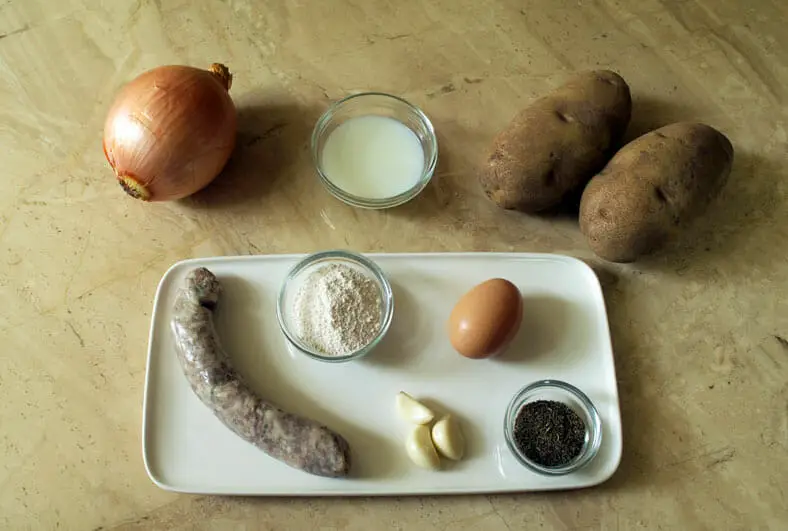
About the Potato Pancake Recipe
As you’ll see soon enough, draniki is a very easy to make potato pancake very much similar to the Jewish latke. This isn’t a fluke by any means, though, since both recipes stem from Jewish traditions.
First, a quick word on the name draniki. There is an old Russian word drat, which translated back then to roughly mean “to grate.” Nowadays, the word has changed to mean something more along the lines of “to flog,” but draniki had already been named before that happened.

The name draniki can thus signal to you that the key to this recipe involves grating, and it’s pretty safe to assume what exactly you might be grating for a Belarusian recipe: the potato. Depending on the recipe, however, you might end up grating more than just potato for your draniki. Both to add flavor and to prevent discoloring, some recipes will suggest that you alternate grating potato and onions when making the base for your potato pancakes. Just keep in mind that the name of the game when it comes to your grating is speed. Get it done, and get it done quickly.
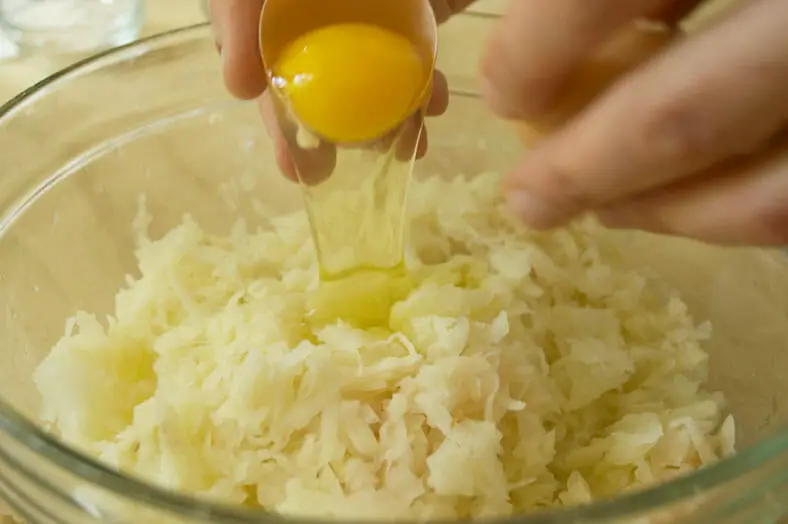
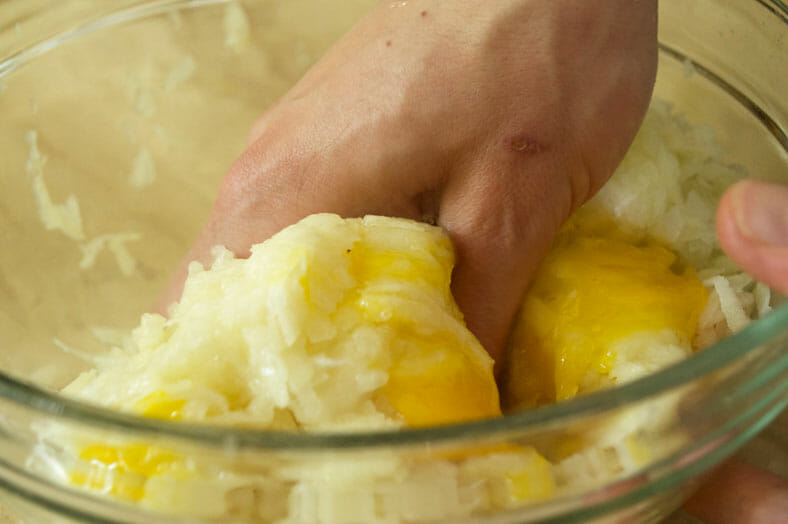
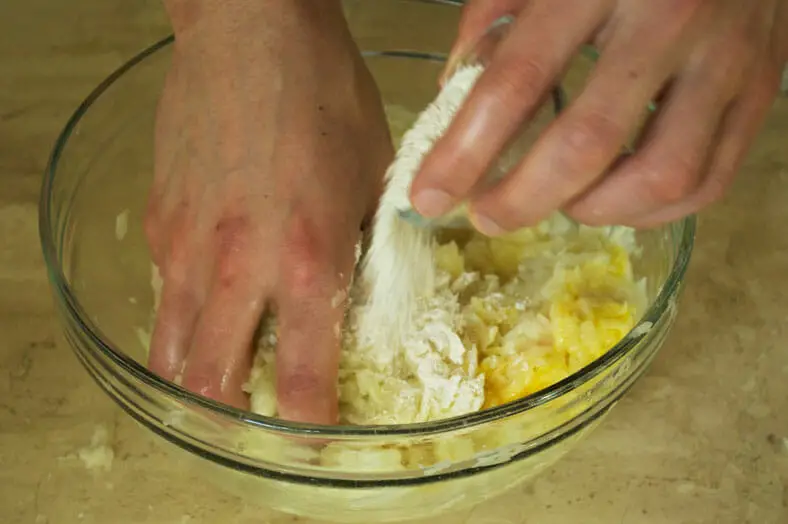
Once you’ve grated all you’ve needed, then you might add some additional ingredients to bind your potato pancakes together. There’s a small bit of debate as to whether it’s traditional to add a bit of flour in as a binder, although a good lot of recipes will suggest you do add an egg and most likely a touch of flour. Include a small bit of seasoning in there as well, and mix everything through until you have a draniki batter that can stay together as you fry it up.
One particularly interesting deviation of the draniki from the traditional latke is that this particular potato pancake might feature a stuffing in the middle. It’s not a mandatory add, but it is an intriguing and fun addition worth trying if you haven’t before.
To cook your potato pancakes is simple. Put a pan with a nice layer of oil on some heat and get it nice and prickling hot temperature. Add your draniki into the oil and let it fry till golden brown on one side.
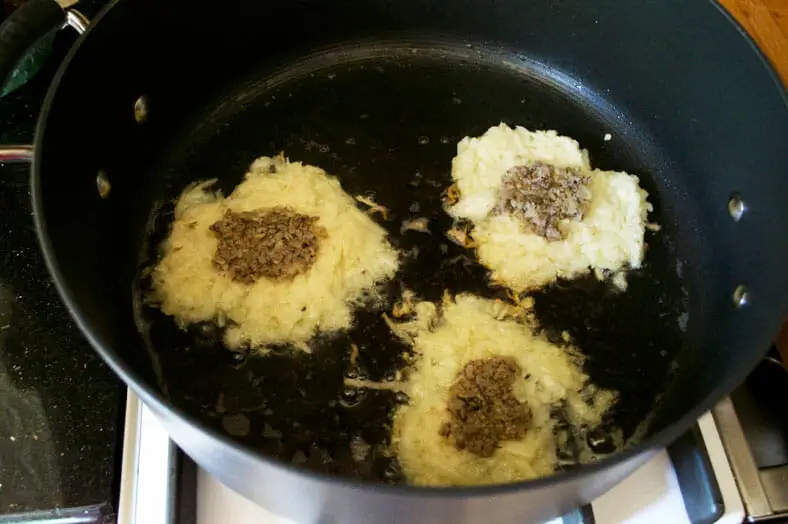


If you do happen to want to add some filling into the middle, layer some in the middle followed by another bit of batter on top to cover the filling. When it comes time to flip your potato pancake, just be careful to keep everything intact.
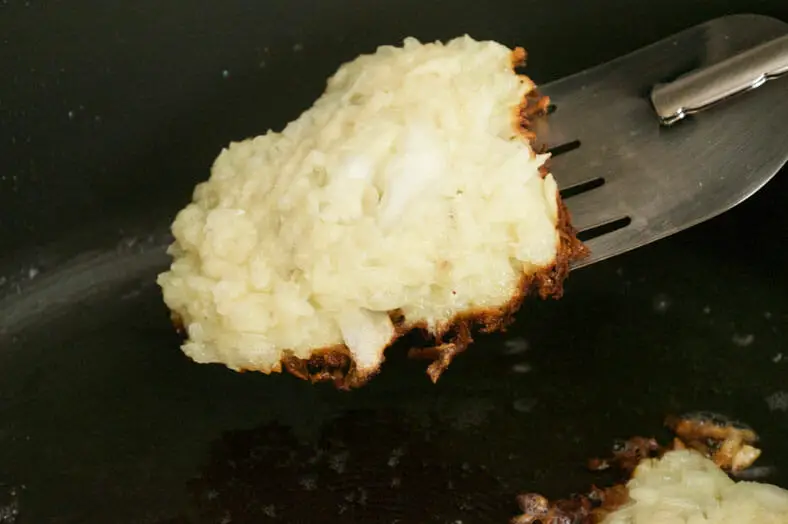
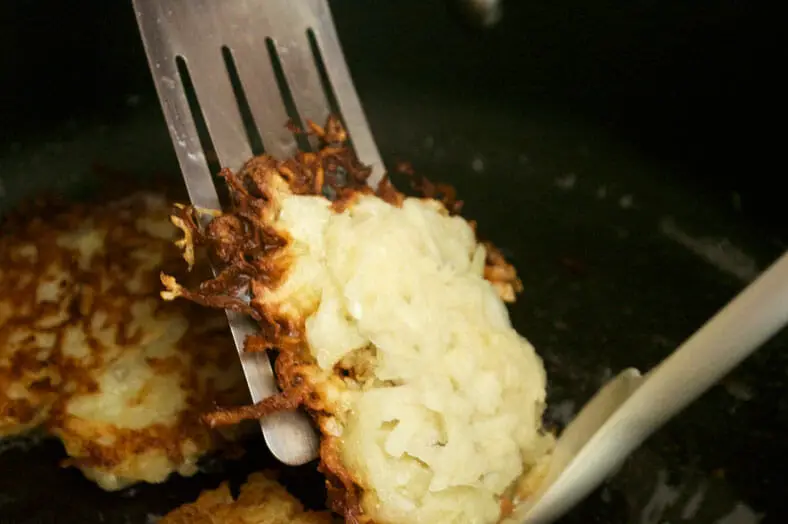
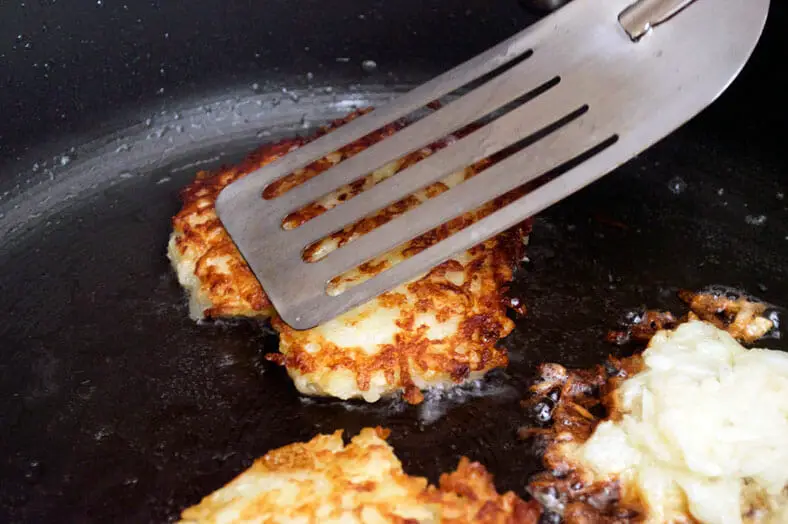
Once you’ve cooked your draniki on the other side until golden brown, you’re done! Rinse and repeat until you’ve created all your potato pancakes from the batter, and serve with sauces like sour cream.
Our Take on the Recipe
As far as reference recipes go, we found it an easy choice to go with a recipe sponsored by the Belarusian government for its national dish. There were, however, some changes we ended up making in our own version of this potato pancake.
For starters, the reference mentions that the special type of Belarusian potato has a more floury and extra starchy texture to it than normal, so binding ingredients like eggs and flour aren’t necessary. Without any real access to these specific types of Belarusian potatoes, we substituted in russet potatoes as well as both flour and eggs into our draniki batter.
So that our kitchen wouldn’t be overrun with potato pancakes, we also scaled back some of the recipe to make for a much more manageable portion size. Even with the readjusted recipe, you’ll still end up with more than your fair share of draniki.
For the filling, we combined several elements of other recipes to come up with our own sausage meat and garlic filling, which we first pre-cooked then placed mid-fry into each potato pancake. Again, this is an optional add, but it was a really nice addition to the savory texture and flavor of the draniki as a whole.
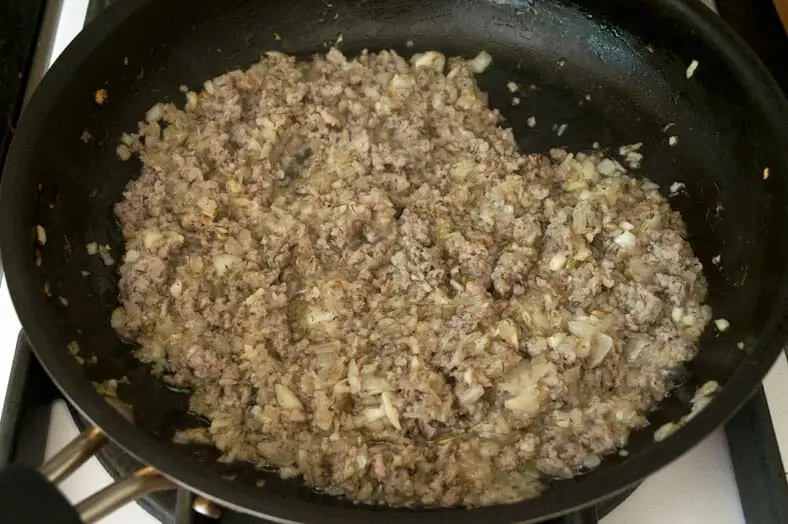
Also, we used a very similar tactic that we had used with our latkes in re-adding potato starch that had separated from squeezed out water. In addition to the flour and eggs, this tactic allowed us to have really robust draniki that stayed intact throughout the entire frying process.
Other than that, the recipe was very straightforward, and the end result came out delicious. Especially with the fun method of adding filling into the draniki, this is one potato pancake recipe that we would readily recommend.
Enjoy!
What sort of filling would you put in your draniki? Comment below!


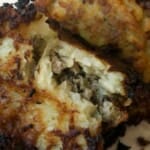
Draniki – Belarusian Potato Pancakes
- Total Time: 30 minutes
- Yield: 4 people 1x
Description
Draniki – Belarusian Potato Pancakes in yellow onion, minced and diced.
Ingredients
Batter
- 2 large russet potatoes, washed and peeled
- ½ medium-sized yellow onion
- 1 egg
- 2 tablespoons whole wheat flour
- ¼ cup full-fat or reduced fat milk
- Salt and pepper to taste
Filling
- 1 sausage, removed from casing
- ½ medium-sized yellow onion, minced and diced
- 3 garlic cloves, minced
- 1 teaspoon dried dill
- 1 teaspoon sea salt
- 1 teaspoon black pepper
- 1 tablespoon olive oil
Instructions
Stage 1 – Prepare Your Draniki Filling
- First, remove your sausage meat from its casing. You can do this by using a paring knife to cut through the casing and make an incision lengthwise. Then place the sausage meat into a mixing bowl
- Add your minced onions, minced garlic and dried dill to the mixing bowl with your sausage meat. Mix well, adding your salt and pepper as you mix it through
- Take a medium saucepan over medium-high heat and add your olive oil. Once heated, add your mixed filling and sauté for 4-5 minutes or until you feel the sausage meat has been thoroughly cooked through
Stage 2 – Create Draniki Batter
- Place a grater over a large mixing bowl
- Take one of your peeled russet potatoes and begin to grate it into the bowl. Occasionally alternate grating your onion in between potatoes, since the onion will help prevent your potato pancakes from discoloring. Also, the smaller the grate sized, the better and easier it is to cook
- Crack your egg into the bowl of potatoes and onions and mix through with your hands. Mix as thoroughly as you can. The batter will be slightly wet and mushy at this point
- Next, periodically add your flour into the batter while continuing to mix it through the batter. The batter will begin to thicken, and soon you’ll be ready to make some potato pancakes!
Stage 3 – Fry your Draniki
- To make your potato pancakes, take wide shallow pan over medium-high heat and, as it heats, add some oil (we used olive here)
- When the oil is nice and hot (but not smoking!), add a spoonful of your draniki batter and flatten as best you can. Repeat to fit as many potato pancakes in the pan as you can
- Let it fry for 1 minute so that the batter can set, then take up to 1 teaspoon of your filling and place in the middle of each of your draniki
- With your filling placed in the middle, take another spoonful of batter, place on top of the filling, and spread evenly
- Let your draniki fry for another 1 minute (as it becomes golden brown), then flip each of your potato pancakes
- Cook for another 2-3 minutes on the other side, then remove from the pan and onto a plate lined with a paper towel
- Repeat until all your potato pancakes are made, then enjoy!
- Prep Time: 15 mins
- Cook Time: 15 mins
- Category: Entrees
- Cuisine: Belarusian
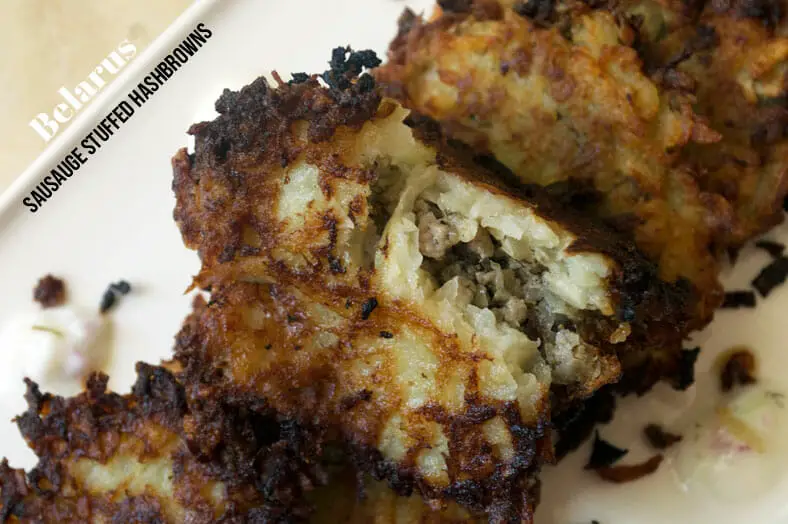

This sounds like proper comfort food! I don’t know what I’d put in it – I think they’d be lovely on their own!
Comfort food it is indeed, Elizabeth! They are lovely on their own as well and can be eaten with no filling at all. The beauty about them too, though, is that you can try just about anything and still have them be delicious draniki 🙂
If you give this recipe a try, let us know how it goes!
Such an interesting dish. I must note that it varies from a proper traditional Jewish recipe if you add milk along with sausage – mixing milk and meat is a no-no in traditional Jewish cooking because it renders the dish non-kosher. Separation of milk and dairy is required by traditional Jewish scripture.
This was something I’d actually thought about as we were testing the recipe, Laura. It might be interesting to develop an adaptation to the recipe to make it kosher compliant. Definitely something for us to noodle over 🙂